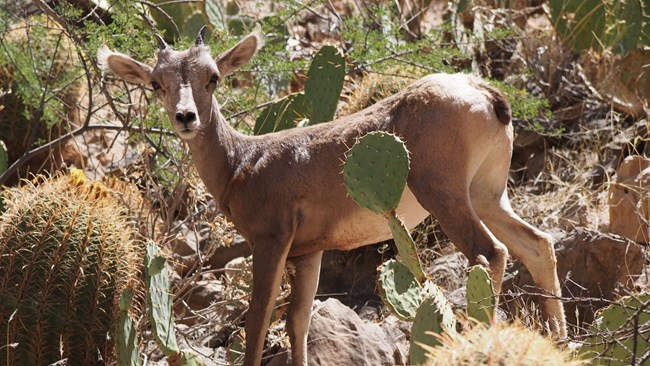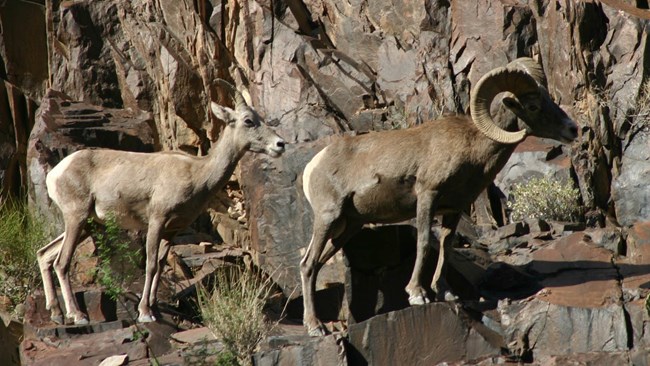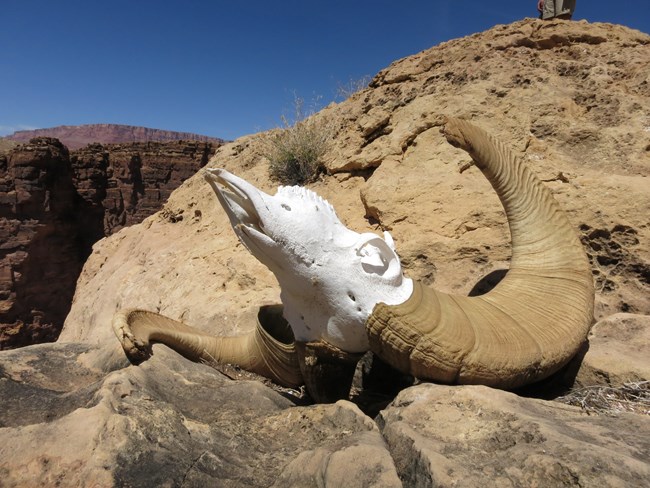Last updated: September 28, 2024
Article
Desert Bighorn Sheep in Grand Canyon

NPS Photo/ Gerald Allen Buckman

NPS Photo/ Robb Hannawacker
Scientific Name
Ovis canadensis nelsoni
Identification
- Muscular body with chocolate brown fur. They have white fur around the muzzle, rump, and belly.
- Rams (males) have large curved horns, while females (ewes) have short horns with only slight curvature.
- Desert bighorn are the largest native animal in the park, with rams weighing up to 250 lbs (113 kg).

NPS Photo/Mark Lellouch
Habitat
- The unique landscape found in Grand Canyon is excellent habitat that provides remote refuges for these animals.
- They are commonly seen on steep terrain and cliffs.
- They live throughout the American Southwest, including Grand Canyon, Mojave Desert, and Sonoran Desert. The population of desert bighorn sheep in Grand Canyon is a naturally persisting population without direct transplants of bigorns from other areas.

NPS Photo
Behavior
- Desert Bighorn sheep are highly adapted for desert climates and can go for extended periods without drinking.
- They are social animals and form herds that are usually 8–10 sheep. Herds as large as 20 sheep have been seen along the Colorado River through Grand Canyon.
- Rams battle to become the dominant animal in a herd, charging head on at each other with their horns until one ram retreats.
